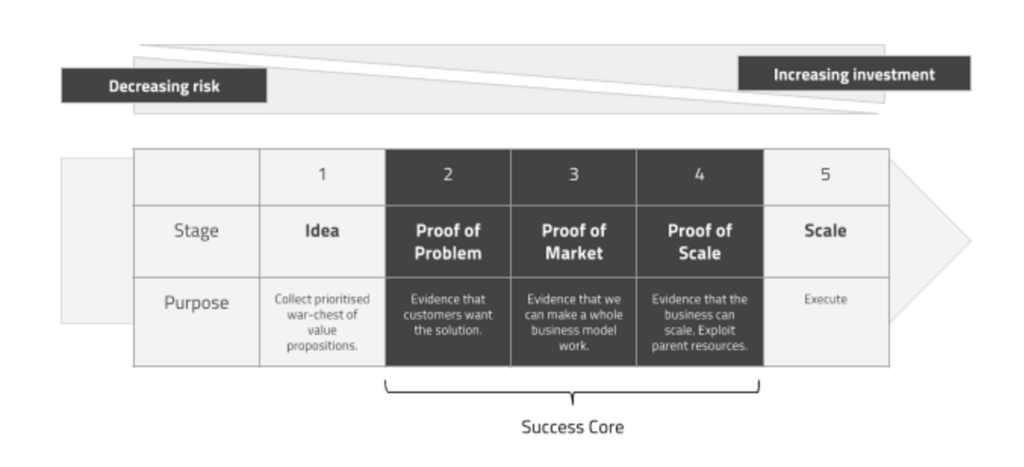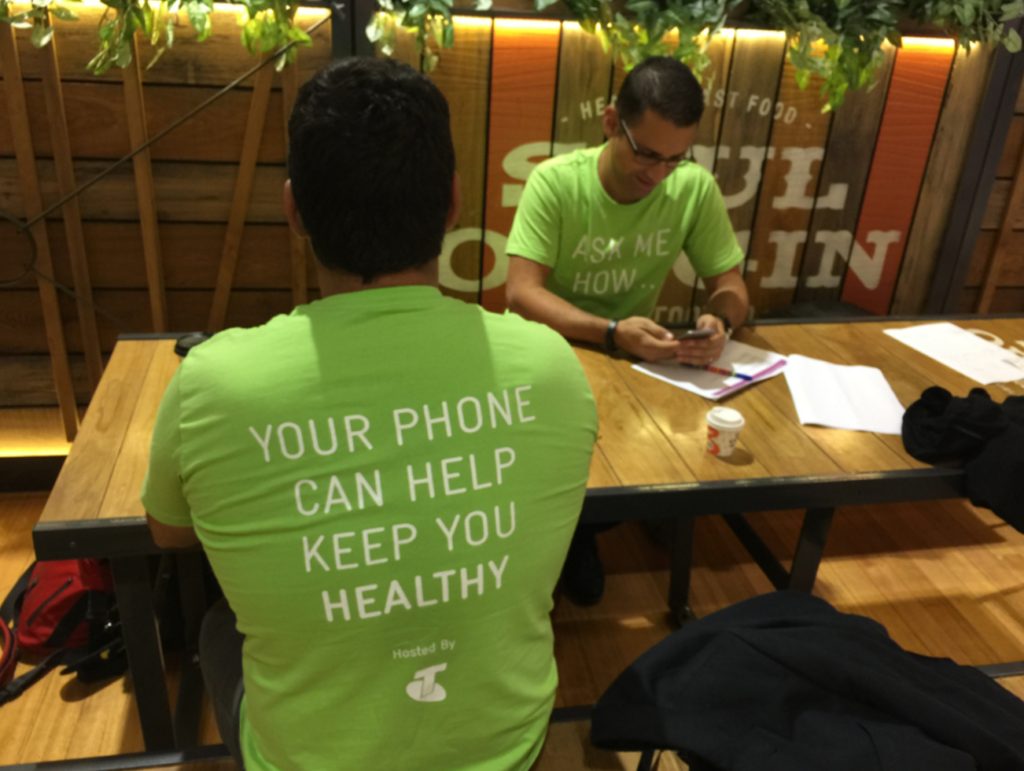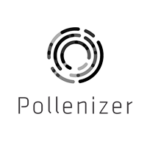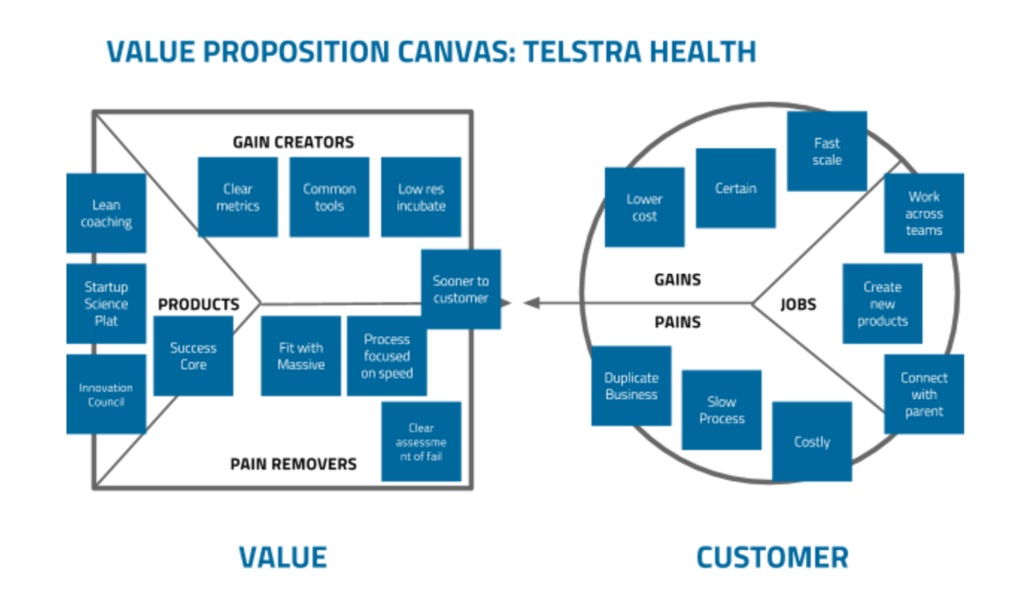CONTEXT
Telstra is Australia’s largest telecommunications and media company. Today the business’s core product lines are being rapidly commoditized or replaced by competitive forces and new strategies are emerging to fuel the next generation of growth.
The emerging opportunity of digital health is a space that is arguably perfect for Telstra. It is so nascent that most of the value creation is yet to be done. Whilst many companies are starting to explore the opportunity, it remains largely a series of offline business models. It is also a space that Telstra has a considerable ‘right to play’ because trust and scale will be required to deliver these new solutions in national and international markets. The technologies that telcos understand well such as networks, hardware, communications, security, data and billing will be critical.
What Telstra did not have was clinical expertise which the business solved by acquiring some of the best digital health businesses and the talent that created them. The new division grew from nothing to hundreds of people spread across the world in just a year. Now Telstra Health needed to scale those businesses with it’s ‘Unfair Advantage’ and to start building new products using the combined talents across the group.
This work was different to rolling out a mobile network. The customers were different. The landscape was rapidly shifting. Most of the work to do was creating new growth that had no precedent.
Pollenizer worked with Telstra Health to develop ‘How We Work’ – a new way of working that accepted and thrived in this context.
VALUE PROPOSITION CANVAS
Above is the Value Proposition Canvas we created to fit the customer (Telstra Health) with value that Pollenizer could bring. The Value Proposition Canvas was pioneered by Alexander Osterwalder and the Strategyzer team. It is a powerful tool for mapping clear customer pains with ways of solving them with a company’s products. More on how it works here.
CUSTOMER
Our assessment of the business:
- JOBS: The business needed to create new products from talent that resided in dislocated teams. How could we build these new businesses with the cross-disciplinary potential of different backgrounds and then connect with Telstra itself to scale them fast?
- PAINS: Some of the acquired businesses had overlapping value to end-customers and generally the process was too slow and costly, introducing risk to the earlier stages with so many new products to imagine and build.
- GAINS: We needed to create a new way of working that would bring more certainty to early stage pipeline and allow the team to develop new products at a faster velocity.
VALUE
Our hypothesis for a new way of working included:
- PAIN REMOVERS: All products need to express how they fit in the #MASSIVE that Telstra Health established including the other products in the platform that were similar so that we could start working as one organisation. We needed a process that obsessed about and measured velocity. We needed a way to decide to ‘fast-fail’ or double down.
- GAIN CREATORS: We needed to track new products and measure if they were creating value. We needed common, accessible tools that the entire business could use and share a common language around. We needed to collaborate with end customers sooner so that we could discover what they needed faster. We needed a lower resolution way to incubate new ideas to increase the volume of experiments and decrease the risk of failure.
- PRODUCTS: We used Pollenizer’s ‘Growth Practice Advisory’ to coach key teams and leadership in lean startup and user-centered design. We provided our Startup Science Innovation Platform to build business models, track experiments and measure Learning Velocity. We co-designed an Innovation Council to govern new venture building including funding and tracking lessons learned. These were tracked through Pollenizer’s ‘Success Core’ lifecycle model.
LESSONS LEARNED
Here’s some things we learned together.
EVERYONE MUST LEARN TOGETHER
Unlike a business case for known products, the evidence of value for new ventures is in constant flux and hard to get a fix on. This makes it impossible to allocate annual funds/resources based on low-enough risk assumptions.
We created a weekly cadence for teams to meet with leadership to share lessons learned and, where needed, request and allocate funding. This group behaved like an angel syndicate, paid attention to what we being discovered through time and focused on customer value.
‘SUCCESS CORE’ REMOVES RISK AND INCREASES CERTAINTY
 Large enterprise tends to go from Idea to scale as fast as possible. This can over-invest in the wrong path early on and slow down progress as teams spend time performing work around elements of the business model that are not yet required. We learned that having different patterns for the business model discovery stages could successfully propel a new idea towards scale faster than trying to think it all through in advance.
Large enterprise tends to go from Idea to scale as fast as possible. This can over-invest in the wrong path early on and slow down progress as teams spend time performing work around elements of the business model that are not yet required. We learned that having different patterns for the business model discovery stages could successfully propel a new idea towards scale faster than trying to think it all through in advance.
GETTING OUT OF THE BUSINESS IS HARD, BUT VITAL
Large enterprise has a habit of getting customer insights from focus groups and analyst reports. These can be helpful to get a strategic sense of direction but contain blind spots for the details that turn into delight for the end customer.
We found that ‘getting out of the building’ to interact with customers was scary and difficult to mobilise initially. When we eventually did it, we learned literally hundreds of insights valuable to understand how we could best serve the end customer.
 We found the T-Shirts and banners you can see in the photo very helpful to wrap a context around the sessions that helped the customers know who we were and what we wanted to interact around before we spoke.
We found the T-Shirts and banners you can see in the photo very helpful to wrap a context around the sessions that helped the customers know who we were and what we wanted to interact around before we spoke.
TEMPLATES CAN DRIVE NEW HABITS
Value can get lost in large amounts of words. Decision makers get fatigue trying to extract value. Simple templates can force simple communication and pattern recognition across the business. We used the lean canvas as a core framework for sharing business models and also introduced some key templates to describe important (and often moving) elements of the business.
A LITTLE BIT OVER A LONGER PERIOD IS BETTER THAN A BIG PUSH
Humans don’t want to change their habits. The changes required to meet the goals of the business are simply not possible with a big project to teach new skills or annual funding cycles. Decision makers interact on a weekly basis with the new innovations and Pollenizer coaches checked in weekly for enough time to establish the new habits over time.
VIDEO STORY


